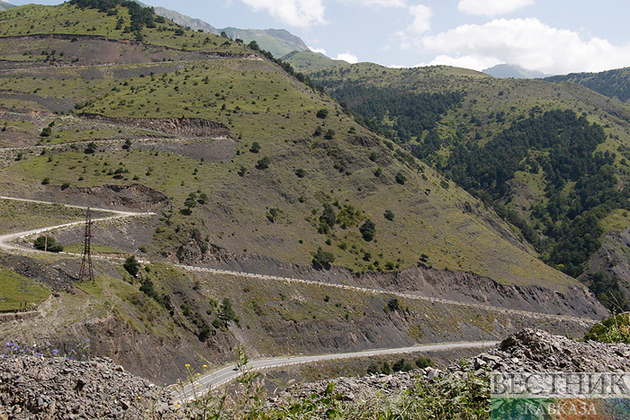The transport and logistics map of the South Caucasus region is changing before our eyes. The governments of Iran and Azerbaijan on March 11 signed a Memorandum of Understanding, a historic document on the creation of new communication links between the East Zangezur economic region of Azerbaijan and the Nakhchivan Autonomous Republic through the territory of Iran, which would seriously change the agenda of discussions around the fate of regional communications, CGTN writes.
Communications from the western regions of Azerbaijan to Nakhchivan will go through Iran. There is no doubt that the new communications will make strategic changes to the map of transport corridors and logistics in the space of the Middle Corridor of China's Belt and Road Initiative (BRI). China had been developing the Trans-Caspian international transportation route (TITR), also known as the Middle Corridor, for several years as part of BRI, but then the coronavirus pandemic tied supply chains into inextricable knots. The aim of the TITR – a 6,500 kilometer network of roads, railroads and ports that crosses Kazakhstan, the Caspian Sea, Azerbaijan, Georgia, Turkey and the Black Sea – was to reduce the delivery time to two weeks instead of 60 days by sea. The project was implemented through loans and grants provided by the Chinese government.
In the new regional and global realities created by the 44-day war between Azerbaijan and Armenia in 2020 and the current conflict in Ukraine, this path is of utmost importance. The special military operation of Russia in Ukraine and the Western sanctions imposed in this regard against Russia limit the possibility of using transport and transit corridors along the East-West route through Russian and Ukrainian territory. Therefore, the demand for new transport lines is growing. China and Europe cannot wait for the end of the conflict and the settlement of all issues, and the importance of the TITR increases exponentially in order to continue cargo movement.
In 2020, China overtook the United States in terms of trade with the European Union and came out on top. The volume of foreign trade turnover between China and the EU during the year amounted to 586 billion euros ($646 billion). A large proportion of the cargo from China to European countries went along the northern corridor BRI. Now the eyes of the Chinese partners can be turned to the South Caucasus. And the Memorandum signed in Baku, capital of Azerbaijan, this month creates excellent opportunities for solving the problems.
The purpose of the Memorandum is to create a new railway, a highway and unspecified energy infrastructure between the East Zangezur region and the Nakhchivan Autonomous Republic. From here, freight going for export, import or sent in transit through two countries will follow. In addition, the involved parties, according to the Memorandum, must ensure the construction, expansion and reconstruction of roads in their sovereign territory.
The Memorandum was concluded between Azerbaijan and Iran, but it is not difficult to calculate how important this new line of communication will be for other countries in the region and for international logistics.
China's partners in Europe have already stepped up the search for new logistics routes in connection with the rejection of Russian transit. On March 16, Finland's major freight operator Nurminen Logistics and Kazakhstan Railways announced its decision to commercialize the TITR.
Especially considering the parallel work on the Kars-Igdir-Nakhchivan railway project between Turkey and Azerbaijan. Thus, the new communications that will be built in accordance with the signed memorandum will not be a dead end, but will allow the Azerbaijan's government to unite the railways and open up another opportunity for Chinese cargo to Turkey and further into Europe. Communications through Iran will be shorter in length. An even shorter route from China to Europe could become in the event of the opening of the Zangezur corridor crossing the territory of Armenia, but this project has not yet been implemented.
In any case, a very significant increase in freight traffic through the South Caucasus is expected, so the more branches BRI has, the more significant this initiative will be. The modern transport and logistics infrastructure of Azerbaijan is at the service of the trading parties.
Iran also began an accelerated modernization of roads and tracks. We should also not forget about cooperation directly between China and Iran. The volume of trade between the two countries in 2021 amounted to $14.9 billion. Although the figure may not be as impressive as the one of China's trade with the EU, it is worth recalling the 25-year strategic cooperation agreement signed in March last year between China and Iran. Given this fact, the road built by Azerbaijan to Iran will greatly simplify the task for the Chinese side and will allow them to use modern infrastructure and a safe way to deliver their goods.
The Middle corridor of BRI is becoming the main one for China and its partners, and the cooperation between Azerbaijan and Iran opens up excellent opportunities for solving many problems.










